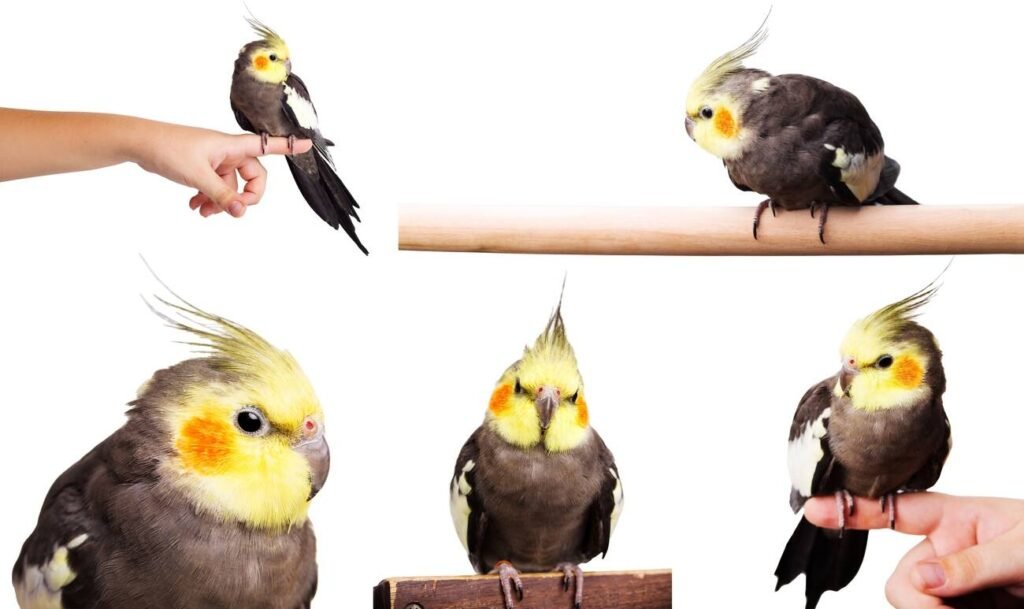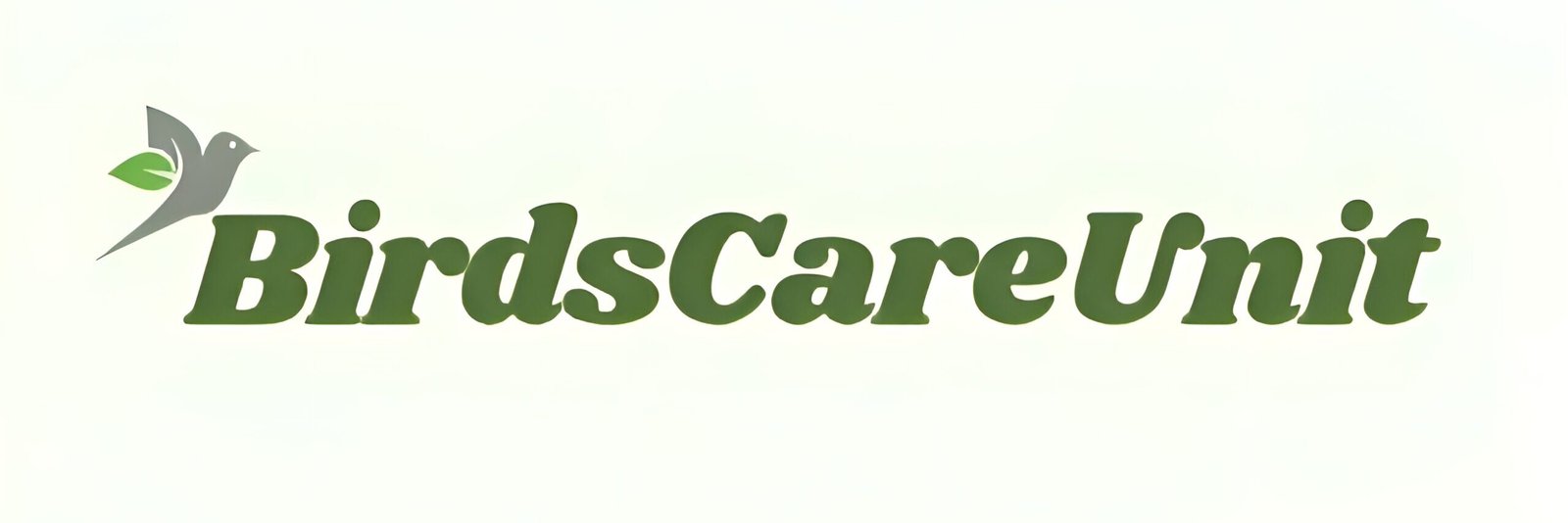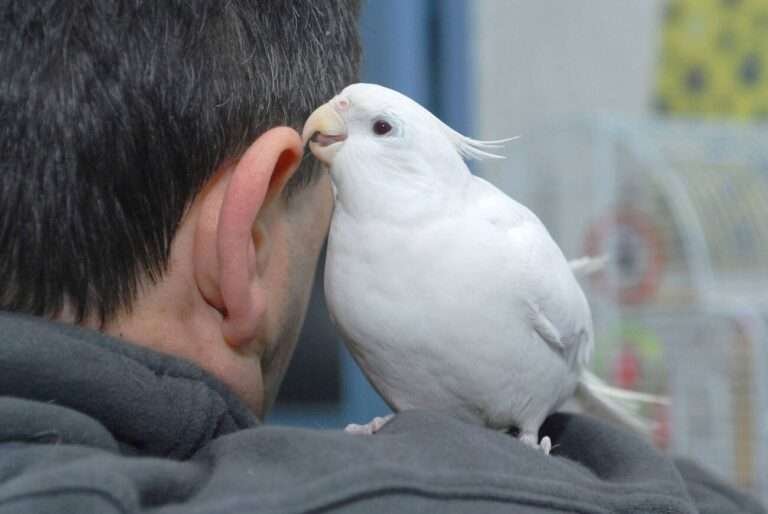How to Train a Cockatiel to Free Fly

Having more than a hundred cockatiels this year in my home has given me plenty of experience with these delightful birds. But there is one special cockatiel that stands out: a lutino cockatiel named Tweety. Tweety is a calm and cool male cockatiel that I have trained myself at home. One of the most thrilling experiences for any bird owner is watching your cockatiel spread its wings and fly freely. However, training your cockatiel for free flight isn’t something you can jump into right away—it requires patience, trust, and dedication. In this comprehensive guide, I’ll walk you through the entire process of training a cockatiel to free fly, from building trust to flying outdoors safely.
Why Train Your Cockatiel to Free Fly?
Training a cockatiel to free fly is not only beneficial for your bird’s physical health, but it’s also an amazing way to strengthen the bond between you and your feathered friend. Free flight gives your cockatiel the exercise it needs, helps boost confidence, and promotes mental stimulation. But most importantly, it allows your bird to experience the joy and freedom of flight in a safe and controlled way.
Understanding Your Cockatiel Before Free Flight Training
Before you even think about teaching your cockatiel to fly freely, it’s essential to understand your bird’s unique personality, health, and physical abilities. Some cockatiels are naturally more adventurous and energetic, while others may be shy or cautious. Understanding these traits is crucial to developing a successful free flight training plan.
Assess Your Cockatiel’s Health
Before starting free flight training, ensure your cockatiel is in good health. A healthy cockatiel will have the stamina and strength needed for flight. Here are a few things to check:
- Weight: Make sure your cockatiel is at a healthy weight. Overweight or underweight cockatiels may have trouble flying.
- Feather Condition: Your cockatiel’s feathers should be clean, smooth, and intact. Damaged or molting feathers may make flying more difficult.
- Wing Strength: Your bird’s wings should be strong enough for sustained flight. You can build up strength through wing exercises (more on that later).
Recognize Your Bird’s Fears
Every cockatiel is different, and some may have certain fears that could interfere with flight training. For example, loud noises, unfamiliar environments, or even sudden movements can scare your cockatiel and make them hesitant to fly. Pay attention to what makes your bird nervous, and work to minimize these fears. A calm, trusting cockatiel is much easier to train.
Building Trust and Communication
One of the most important steps in training a cockatiel to free fly is building a strong foundation of trust. A bird that trusts you is more likely to listen to your commands and return to you when called. This trust is built through positive reinforcement, patience, and consistent interaction.
Step 1: Positive Reinforcement
Positive reinforcement means rewarding your cockatiel for good behavior. Every time your bird does something you want (like flying to you or stepping up), give it a treat, offer praise, or gently pet it. Cockatiels are smart and will quickly learn that good things happen when they follow your commands.
Step 2: Basic Commands
Before starting flight training, your cockatiel should know basic commands such as “step up” (when you ask the bird to step onto your finger) and “step down” (when you ask the bird to step down from your hand). These basic commands will help your bird understand that you’re in charge and give you better control during flight training.
Step 3: Create a Safe and Calm Environment
Ensure that your cockatiel feels safe in its environment. Spend time with your bird every day to build a strong bond. Speak softly and move slowly around them, especially during training sessions. The more secure your bird feels with you, the easier it will be to train them to free fly.
Wing Conditioning: Preparing for Flight
Just like humans need to exercise to stay fit, your cockatiel needs strong wings to fly. Wing conditioning is the process of helping your bird develop the muscles needed for sustained flight. Here’s how to do it:
Step 1: Wing Exercises
Even if your bird isn’t flying yet, you can help strengthen their wings through exercises. One effective exercise is gently holding your cockatiel on your hand and encouraging them to flap their wings. You can also let them fly short distances between perches in a controlled indoor space to build their stamina.
Step 2: Proper Wing Trimming
If your cockatiel’s wings have been clipped (trimmed to prevent flight), you’ll need to let them grow back before starting free flight training. Be patient, as it may take several months for the feathers to regrow. However, if you still prefer to clip your bird’s wings, avoid over-clipping, as this can hinder their ability to fly safely.
Indoor Flight Training: The First Steps
It’s always best to start free flight training indoors. Indoor spaces are safer and more controlled, reducing the risk of accidents or your bird flying away. Here’s how to begin:
Step 1: Create a Safe Space
Choose a room that’s safe for your cockatiel to fly in. Remove any potential hazards like ceiling fans, open windows, or sharp objects. Make sure the room is spacious enough for your bird to practice short flights without obstacles.
Step 2: Encourage Short Flights
Start by encouraging your cockatiel to fly short distances between perches or your hand. You can use treats, toys, or verbal cues to motivate them. Keep the sessions short at first, allowing your bird to build confidence and gradually increase the distance they fly.
Step 3: Use Rewards
After each successful flight, reward your bird with its favorite treat or praise. This reinforces the idea that flying is a good thing and helps build their confidence.
Recall Training: Teaching Your Cockatiel to Return to You
Recall training is one of the most critical aspects of free flight. This training ensures that your cockatiel will come back to you when called, even during outdoor flights. Here’s how to master recall training:
Step 1: Start Indoors
Begin recall training indoors, where your cockatiel feels safe. Start with short distances, calling your bird to fly to you from one perch to another. Use a consistent verbal cue, like “come” or “here,” and always reward your cockatiel when it responds.
Step 2: Gradually Increase Distance
As your bird gets better at responding to recall commands, gradually increase the distance between you and your bird. You can also try recall training in different rooms of your house to help your cockatiel adapt to different environments.
Step 3: Use High-Value Rewards
For recall training, use your bird’s favorite treats or toys as rewards. This makes coming back to you even more enticing for your cockatiel.
Outdoor Free Flight Training: Taking It to the Next Level
Once your cockatiel has mastered indoor flight and recall, it’s time to consider outdoor free flight training. Outdoor training offers more space and new experiences, but it also comes with additional risks. Here’s how to ensure a safe and successful transition:
Step 1: Use a Flight Harness
A flight harness is a great tool to use when starting outdoor free flight training. It gives your cockatiel the freedom to fly while still keeping them tethered to you, reducing the risk of them flying away. Gradually let your cockatiel explore outdoor spaces while on the harness.
Step 2: Choose a Safe Outdoor Space
Find a quiet, open space free from predators (like hawks or cats) and distractions. Parks with minimal foot traffic or enclosed gardens work well for outdoor training.
Step 3: Start with Short Flights
Keep outdoor flight sessions short and gradually increase the distance and height your bird flies as they gain confidence. Make sure to stay close to your cockatiel, supervising them at all times.
Safety Precautions for Free Flight Training
Free flight comes with risks, especially when training outdoors. Here are some essential safety tips to keep in mind:
Check the Weather: Avoid training on windy or rainy days, as poor weather can make it harder for your cockatiel to fly and navigate safely.
Beware of Predators: Always be on the lookout for predators, such as hawks or cats, especially when training outdoors. Never leave your cockatiel unsupervised.
Know Your Environment: Be aware of nearby roads, power lines, and tall trees. These can be dangerous if your cockatiel flies too far.
Stay Calm: If your bird flies too high or out of sight, stay calm. Use your recall commands and stay in the area, as your cockatiel will likely return once it feels safe.
Consistency and Patience: Key to Success
Training a cockatiel to free fly takes time and patience. Every bird learns at its own pace, so don’t rush the process. Celebrate small victories, like successful short flights or responding to recall commands, and remember that setbacks are a natural part of the training journey.
Be Patient
Some cockatiels may take longer to feel comfortable flying freely, while others might excel quickly. It’s important to let your bird progress at its own pace. Pushing your cockatiel too fast can lead to stress or fear, which can hinder progress.
Consistent Training
Consistency is key. Set aside time each day for training sessions, even if they are short. Regular, consistent training helps your cockatiel build confidence and understand what’s expected during free flight sessions. It’s better to have several short training sessions throughout the day than to overwhelm your bird with a long, tiring session.
Building Confidence and Trust for Long-Term Success
Training your cockatiel for free flight is not just about teaching them how to fly but also about building their confidence and trust in you. Here are some strategies to keep your cockatiel motivated and confident throughout the process:
Step 1: Keep Things Fun
Cockatiels are playful birds, so make training enjoyable for both of you. Incorporate toys, games, and plenty of praise to keep your bird engaged. The more fun they have, the more eager they’ll be to learn and participate in free flight training.
Step 2: Positive Reinforcement is Key
Reward your bird for good behavior during every training session. Whether it’s with a favorite treat, verbal praise, or a gentle scratch, positive reinforcement helps your cockatiel associate flying with good things.
Step 3: Practice Recall Regularly
Even after your cockatiel has learned to free fly, it’s essential to continue practicing recall commands. This ensures your bird never forgets how to return to you, especially in outdoor settings. Make recall training a regular part of your bird’s routine to keep their skills sharp.
Handling Setbacks with Patience and Care
It’s important to understand that free flight training doesn’t happen overnight, and there will likely be setbacks along the way. Here are some common challenges and how to handle them:
Challenge 1: Fear of Flying
Some cockatiels may be afraid to take their first flight, especially if they’re not used to flying in new environments. If your bird seems hesitant, go back to shorter flights and build their confidence gradually. Always offer lots of encouragement and praise.
Challenge 2: Not Responding to Recall
If your cockatiel doesn’t respond to recall commands right away, don’t get frustrated. Try offering a higher-value reward or taking a step back to shorter distances. Consistency and positive reinforcement will eventually pay off.
Challenge 3: Flying Too High or Far
It’s not uncommon for a cockatiel to fly too high or too far during outdoor training. If this happens, remain calm and use your recall command to call them back. Avoid chasing your bird, as this could cause more panic. Stay in the area and wait for your cockatiel to return when it feels safe.
The Joy of Free Flight: A Rewarding Journey
Training a cockatiel to free fly is a deeply rewarding experience that strengthens the bond between you and your feathered friend. Watching your bird soar through the air with confidence is not only fulfilling for you but also promotes your cockatiel’s physical health and mental well-being. Free flight allows your bird to experience the world in a natural and joyful way, under your loving guidance.
By following the steps outlined in this guide, you can successfully train your cockatiel for free flight while keeping safety and trust at the forefront of your journey. The key is to approach each training session with patience, consistency, and lots of love, ensuring that your cockatiel feels supported every step of the way.
Conclusion: Taking the Leap into Free Flight
Free flight training is an adventure for both you and your cockatiel. It takes time, dedication, and a lot of trust to reach the point where your bird can fly safely indoors and outdoors. But with patience, positive reinforcement, and a deep understanding of your bird’s needs, you’ll find that the rewards far outweigh the challenges.
As someone with more than fifty cockatiels and years of experience, I can confidently say that free flight is one of the most thrilling and enriching activities you can offer your pet. Just remember to stay consistent, take things slow, and always prioritize your bird’s safety. Whether it’s mastering indoor flights or soaring outdoors, you and your cockatiel are in for an unforgettable journey filled with fun, freedom, and mutual trust. Happy flying!


